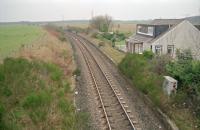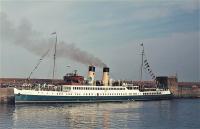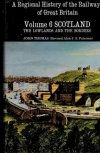Kilmarnock and Troon Railway
Introduction
This was the first railway in Scotland to run (albeit briefly) a locomotive. The line ran from Kilmarnock to Troon with branches to coal mines. Much of the route is still open (the branches, termini, and some portions have been closed and replaced). The line is open for both freight and passengers. The Laigh Milton Viaduct, on one of the closed sections, remains standing.
Why built
This line was built to convey coal from mines around Kilmarnock to a new port at Troon.
Service
Today the line carries both passengers and freight.
Dates
Route described
The line runs from Kilmarnock to Troon Harbour. The Kilmarnock terminus and approach are long closed, from near here the line is open until near Laigh Milton Viaduct wher e the original route is closed over the viaduct. Just to the west the line continues intact to near Barassie wher e the original alignment was changed by the opening of the Glasgow, Paisley, Kilmarnock and Ayr Railway. From here the line ran parallel to the later Troon Loop to Troon Harbour.
Locations along the line
These locations are along the line.
This was a passenger terminus. It was the first station in Kilmarnock and opened in 1818.
...
This junction was formed in 1847 when the original route of the Kilmarnock and Troon Railway (upgraded and converted to standard gauge) was linked by a new connection to Kilmarnock Junction, allowing Kilmarnock [1st] to replace Kilmarnock (St Marnocks) as the terminus of the line from Troon.
...
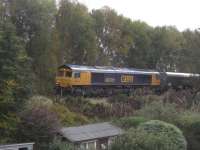
Robert Blane 22/10/2016
This junction was located between Kilmarnock and the former station at Gatehead. A box opened here in 1900 and a line opened eastwards to Mayfield Junction in 1902. This was a double track junction. The box was on the south side of the line.
...
See also
Thirdpart Junction to Mayfield Junction (Glasgow and South Western Railway)
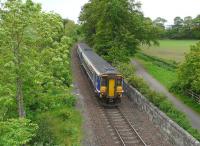
Ken Browne 04/06/2011
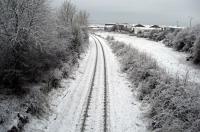
Robert Blane 10/01/2016

Robert Blane 17/11/1985

G H Robin collection by courtesy of the Mitchell Library, Glasgow 06/05/1964
This junction was east of Gatehead station. A branch from the Kilmarnock and Troon ran south east to cross the River Irvine to serve Fairlie Colliery, Caprington Colliery and other pits. The branch was single track, with a loop at the junction, and the main line double track. The signal box was in the 'V' of the junction.
...
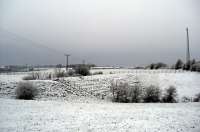
Robert Blane 10/01/2016
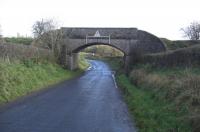
Robert Blane 07/11/2009
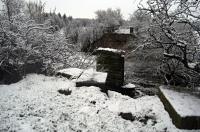
Robert Blane 10/01/2016
This was a two platform station to the west of a level crossing. The main station building was on the eastbound platform. The goods yard was on the south side of the line, approached from the west. There was a signal box at the level crossing, on the west side of the road and south side of the line.
...

Network Rail 27/07/2022
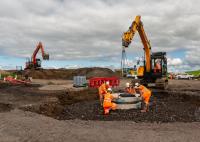
...
Network Rail /07/2022

Network Rail 27/07/2022

Ewan Crawford //1997
This was a headshunt on the regauged Kilmarnock and Troon Railway located just east of the Laigh Milton Viaduct.
...
The 1812 Laigh Milton Viaduct is thought to be the earliest surviving viaduct built on a public railway. The viaduct is 5 miles west of Kilmarnock. It is a four arch double track viaduct over the River Irvine. The engineer for the viaduct, as for the whole route, was William Jessop.
...
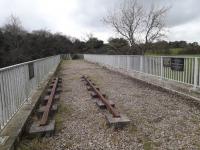
John Yellowlees 24/10/2020

John Yellowlees 04/01/2017
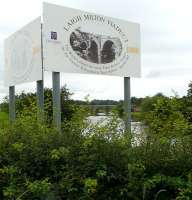
Ken Browne 23/07/2010
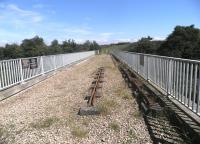
John Yellowlees 17/07/2014
This siding was around mid-way between the former Drybridge (to the west) and Gatehead stations on the Kilmarnock and Troon railway.
...
This signal box controlled the short mineral line for Craig Colliery. The line ran north and was approached from the east. The junction was east of Drybridge station.
...
This two platform station opened on the re-gauged and rerouted line. The main station building was on the eastbound platform. The original alignment was to the north, starting from west of the station and running east to Girtridge Mill. The west end of this original route was retained as a siding for the station - on the north side of the line and approached from the west. To the east was a ...
More details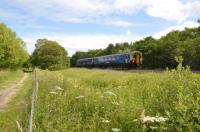
Douglas Blades 06/07/2021
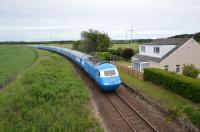
Douglas Blades 26/06/2021
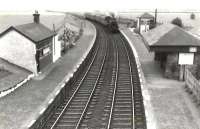
G H Robin collection by courtesy of the Mitchell Library, Glasgow 03/08/1958
...
More details
Douglas Blades 13/07/2021
...
More details
Bill Roberton 31/08/1985
UPM Paper - Meadowhead Paper Mill
...
See also
Meadowhead Paper Mill Branch (British Railways)
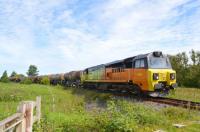
Douglas Blades 06/07/2021
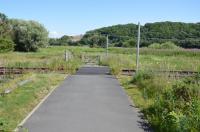
Douglas Blades 13/07/2021
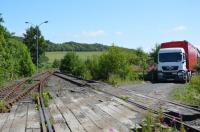
Douglas Blades 13/07/2021
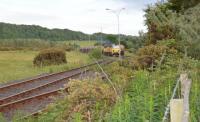
Douglas Blades 16/06/2021
This signal box was on the portion of line between Barassie Junction and Templehill Junction on the route opened re-opened in 1846 as a standard gauge line replacing the old 1812 Kilmarnock and Troon Railway approach to Troon Harbour Goods.
...
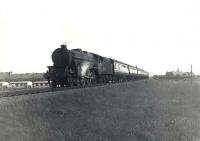
G H Robin collection by courtesy of the Mitchell Library, Glasgow 07/07/1954
This junction was in Troon, just east of the harbour. The lines from Barassie Junction, to the north east, and Troon Junction, to the south east, met before running west into the harbour to serve its west side and eastern breakwater. The curve to the north east was the rebuilt line of the Kilmarnock and Troon Railway.
...
See also
Troon Loop (Glasgow and South Western Railway)
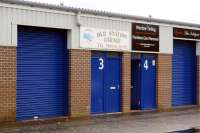
Colin Miller 31/10/2015
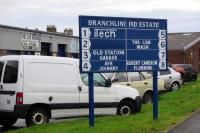
Colin Miller 30/10/2015
This was a two road shed in the south east part of Troon Harbour at the south end of the eastern harbour wall. It probably dated from the 1840s and closed in 1935. Locomotives stabled here were used at Troon Harbour and in the area as far north as Irvine (including Irvine Harbour and the various works there), east to Kilmarnock, and Falkland Yard in the south.
...
This was the passenger terminus of the Kilmarnock and Troon Railway. The station was located near the harbour.
...
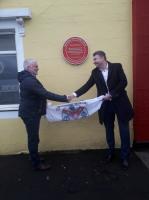
John Yellowlees 19/12/2022
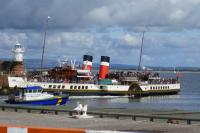
Colin Miller 07/08/2023
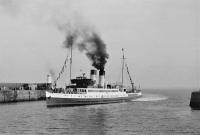
Brian Haslehust 07/09/1968
...
More detailsBooks










